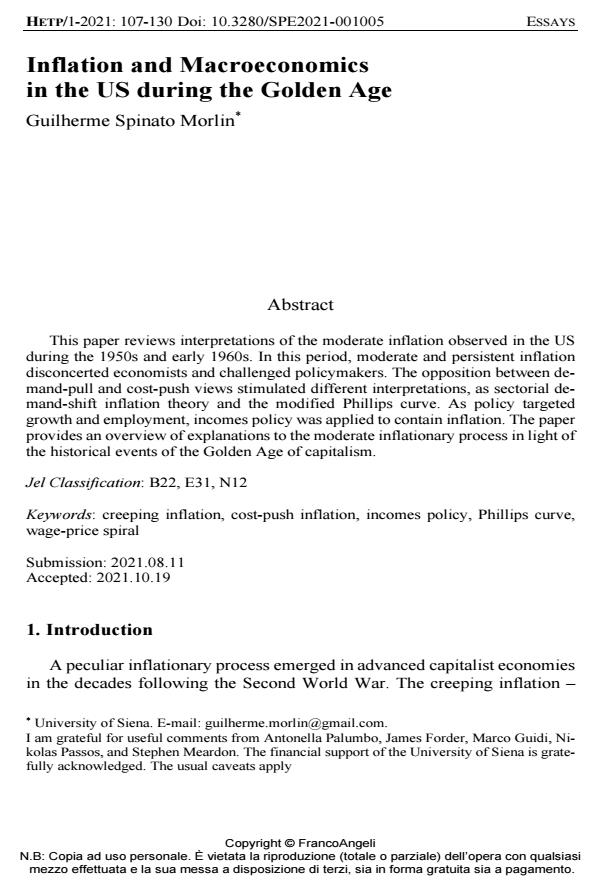Inflation and Macroeconomics in the US during the Golden Age
Titolo Rivista HISTORY OF ECONOMIC THOUGHT AND POLICY
Autori/Curatori Guilherme Spinato Morlin
Anno di pubblicazione 2021 Fascicolo 2021/1
Lingua Inglese Numero pagine 24 P. 107-130 Dimensione file 266 KB
DOI 10.3280/SPE2021-001005
Il DOI è il codice a barre della proprietà intellettuale: per saperne di più
clicca qui
Qui sotto puoi vedere in anteprima la prima pagina di questo articolo.
Se questo articolo ti interessa, lo puoi acquistare (e scaricare in formato pdf) seguendo le facili indicazioni per acquistare il download credit. Acquista Download Credits per scaricare questo Articolo in formato PDF

FrancoAngeli è membro della Publishers International Linking Association, Inc (PILA)associazione indipendente e non profit per facilitare (attraverso i servizi tecnologici implementati da CrossRef.org) l’accesso degli studiosi ai contenuti digitali nelle pubblicazioni professionali e scientifiche
This paper reviews interpretations of the moderate inflation observed in the US during the 1950s and early 1960s. In this period, moderate and persistent inflation disconcerted economists and challenged policymakers. The opposition between demand-pull and cost-push views stimulated different interpretations, as sectorial demand-shift inflation theory and the modified Phillips curve. As policy targeted growth and employment, incomes policy was applied to contain inflation. The pa-per provides an overview of explanations to the moderate inflationary process in light of the historical events of the Golden Age of capitalism.
Parole chiave:creeping inflation, cost-push inflation, incomes policy, Phillips curve, wage-price spiral
Jel codes:B22, E31, N12
Guilherme Spinato Morlin, Inflation and Macroeconomics in the US during the Golden Age in "HISTORY OF ECONOMIC THOUGHT AND POLICY" 1/2021, pp 107-130, DOI: 10.3280/SPE2021-001005